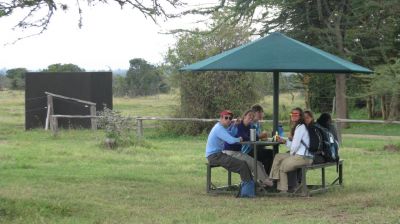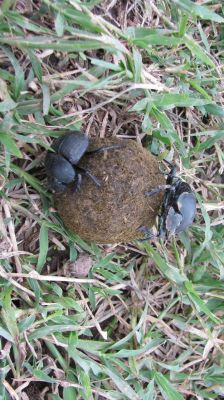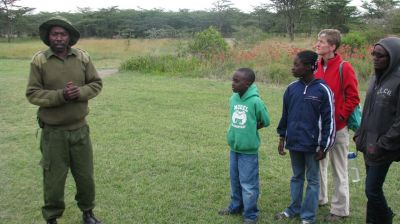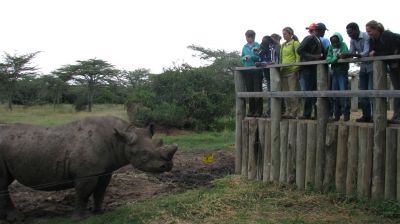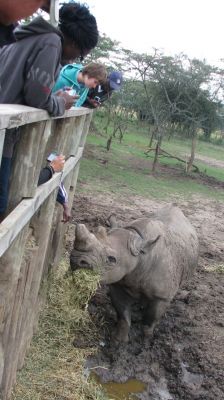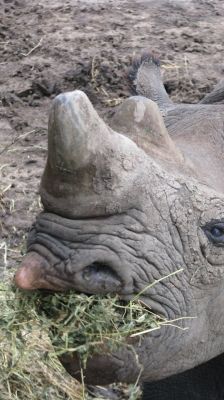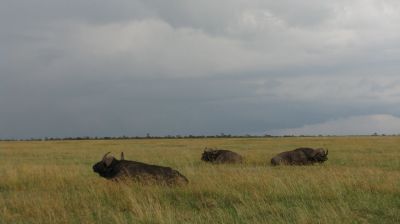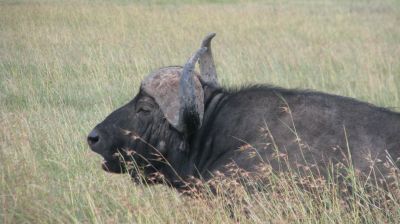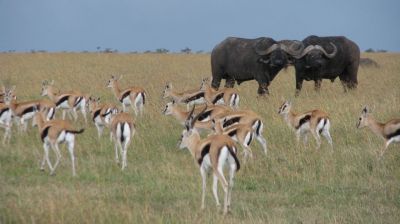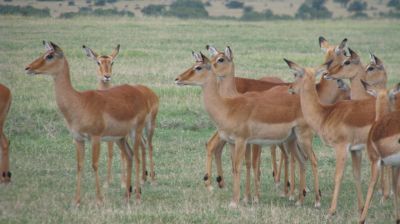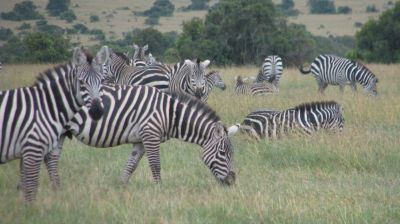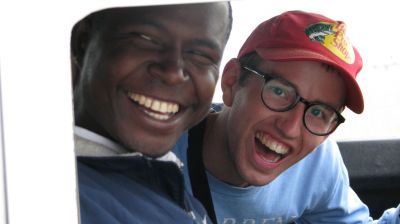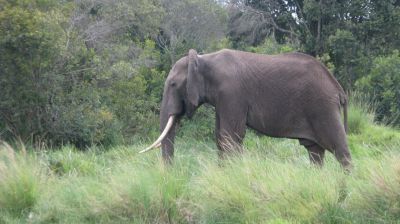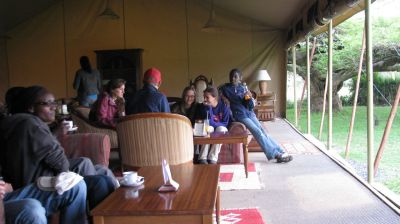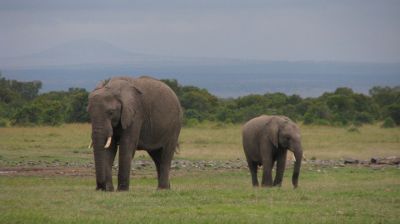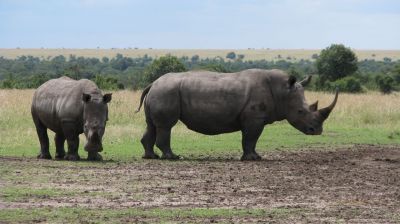
Mara’s blog – We saw elephants. One of my highlights was to see mountains, animals, and monkeys. The vervet monkeys were so funny. We saw twiga (giraffe) and we saw tembo (elephant). There are also lots of mitis (trees) in Kenya. We ate packed lunches before seeing the blind black rhino, named Baraka. He became blind because he was fighting with another rhino. I love Kenya. It is so cool. – Mara Akeyla Sensenig, 9-yr old daughter of Ryan and Donna
Isaac’s blog – Yesterday we went to Ol Pejeta. On the way there we got stuck and had a flat tire. When we got there we met with Giles, the manager of the cows on Ol Pejeta. Then we met with Martin and he is in charge of research and monitoring at Ol Pejeta. After that we went to see a blind rhino named Baraka. First we at lunch than we went to feed him and pet him. We went on a game drive, we did not see any cats, but we saw a lot of gazelle, zebras, and elephants. The last thing was we went to Sweetwaters tented camp for sodas and coffee. Then we headed back. – Isaac Maliki Sensenig, 9-yr old son of Ryan and Donna
Ryan’s addition – Monday began a week of visits to various landowners across Laikipia who are experimenting with various approaches toward managing both wildlife and livestock. These visits began with a visit to Ol Pejeta Conservancy, a 90,000 acre ranch that works to combine wildlife conservation, tourism, and cattle husbandry on the same parcel of land. We awoke early so we could leave the campsite by 6:50 a.m. in order to arrive at Ol Pejeta Ranch by 9:00 a.m. Or at least that was our plan. We experienced some road challenges with the black cotton road becoming a sticky, slippery hazard with the recent rains. After getting stuck and changing one flat tire, we arrived to meet Giles Prettejohn, the cattle manager of Ol Pejeta’s 5000 herd of Boran cattle. He explained that cattle and wildlife coexist at Ol Pejeta, with cattle serving the important role of grazing down tough, rank grass that actually facilitates wild herbivore feeding. While lion predation on cattle occurs on occasion, with properly constructed bomas (cattle corrals), the livestock predation rates are minimal.
We also visited with the director of research at Ol Pejeta, Martin Mulama, who explained the various monitoring projects that are occurring at Ol Pejeta. For example, the Conservancy has successfully grown a population of black rhinos from 19 to more than 70, which share the grassland with a suite of other large herbivores and predators. We returned home more convinced than ever that cattle and wildlife can share this landscape – a lesson in how human communities can successfully live within (even enhance) wild landscapes. – Ryan Sensenig, Associate Professor of Biology, Goshen College






